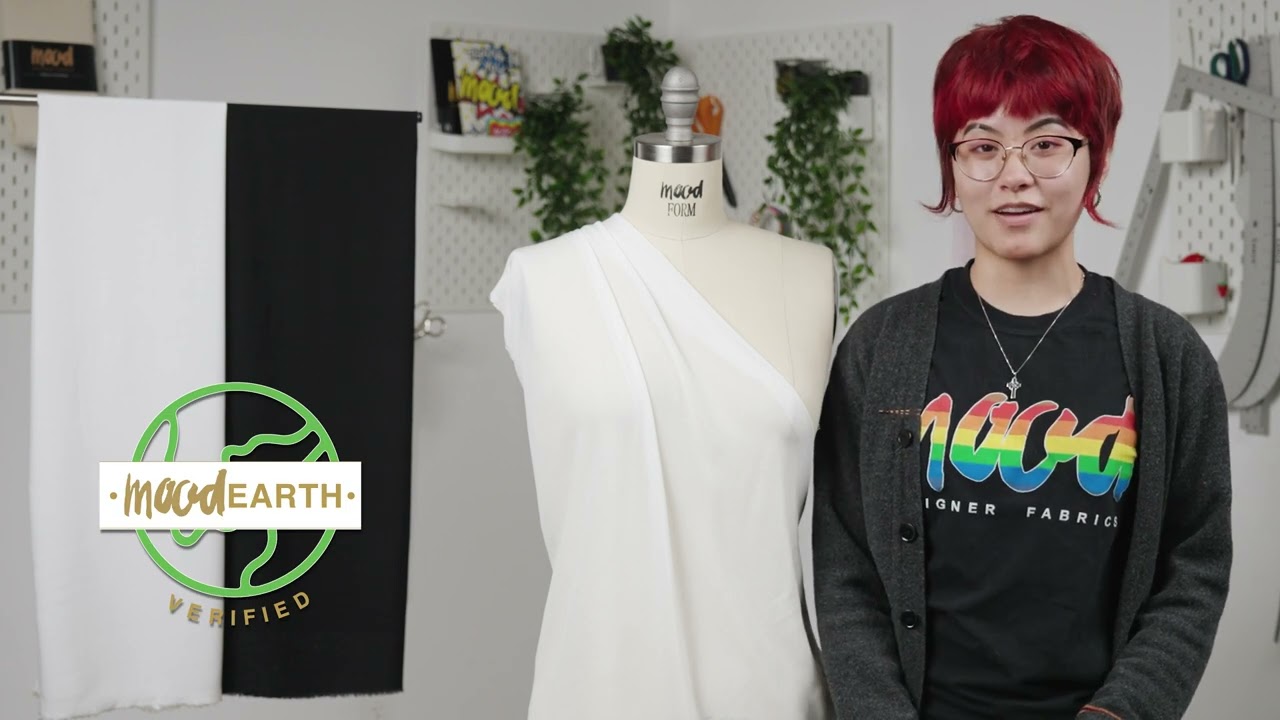Challis rayon fabric is a stunning textile that exudes elegance and sophistication. Made from a blend of natural and synthetic fibers, this fabric offers a luxurious feel and exquisite drape that will captivate your senses. Its lightweight nature makes it perfect for flowing dresses, blouses, and skirts that effortlessly glide with every movement. Whether you’re attending a special event or simply looking to elevate your everyday wardrobe, challis rayon fabric is a must-have.
The softness of this fabric is truly unparalleled, caressing your skin with a gentle touch that will make you feel like you’re wrapped in pure comfort. Its breathable properties ensure that you stay cool even on the warmest days, making it ideal for summer outfits. Additionally, challis rayon is known for its versatility. It can effortlessly transition from day to night, allowing you to create a myriad of stunning looks.
With its rich and vibrant colors, challis rayon fabric adds a touch of glamour and sophistication to any ensemble. Whether you prefer bold and daring shades or subtle and understated hues, this fabric has it all. The durability of challis rayon ensures that your garments will stand the test of time, maintaining their beauty wear after wear.
Indulge in the luxurious feel and versatility of challis rayon fabric today, and let your style shine with elegance and grace.

Understanding Challis Rayon Fabric: A Versatile and Luxurious Choice
Fabric plays a crucial role in the world of fashion. It can elevate a garment from ordinary to extraordinary, making it essential for designers and consumers alike to understand the different types of fabrics available. One such fabric that stands out for its versatility and luxurious feel is challis rayon.
What is Challis Rayon?
Challis rayon is a lightweight woven fabric known for its softness, drape, and breathability. It is made from a combination of wood pulp and natural or synthetic fibers, which are transformed into cellulose fibers and then spun into yarn. The resulting fabric has a smooth texture and a subtle sheen, making it ideal for a wide range of garments.
The History of Challis Rayon
The history of challis rayon dates back to the 19th century, when it was first produced in France. Initially, the fabric was made from wool or worsted yarns, but advancements in technology led to the introduction of rayon fibers. This new iteration of challis became immensely popular due to its lightweight feel and draping qualities.
In the early 20th century, challis rayon gained widespread recognition and became a staple fabric for women’s dresses and blouses. Its popularity continued to soar through the decades, cementing its position as a timeless and elegant choice for various garments.
Characteristics and Benefits of Challis Rayon
Challis rayon possesses several characteristics that make it a sought-after fabric in the fashion industry. Its softness and breathability make it incredibly comfortable to wear, especially in warmer climates. The fabric also has excellent drape, which means it falls gracefully and creates a fluid silhouette.
One of the standout benefits of challis rayon is its versatility. It can be easily dyed, printed, or patterned, allowing designers to create an array of stunning designs and color combinations. Whether you’re looking for bold, vibrant prints or subtle, understated patterns, challis rayon can deliver.
In addition, challis rayon is relatively easy to care for. Most garments made from this fabric can be machine washed on a delicate cycle or hand-washed, making it convenient for everyday wear. However, it’s important to follow the care instructions provided by the manufacturer to maintain the fabric’s quality and longevity.
Uses of Challis Rayon
Challis rayon finds its way into a wide range of garments, thanks to its versatility and luxurious feel. It is commonly used for dresses, blouses, skirts, and scarves. The fabric’s lightweight nature makes it ideal for flowing, ethereal designs, while its draping qualities allow for elegant, figure-flattering silhouettes.
Challis rayon is also a popular choice for summer and resort wear due to its breathability and moisture-wicking properties. The fabric keeps the wearer cool and comfortable, making it perfect for beach cover-ups, kaftans, and loose-fitting pants.
Furthermore, challis rayon works well for both casual and formal attire. It can be dressed up or down depending on the occasion, making it suitable for a wide range of events and settings.
Caring for Challis Rayon
To ensure the longevity of garments made from challis rayon, it is essential to follow proper care instructions. Most challis rayon garments can be machine washed on a delicate cycle or hand-washed with a gentle detergent. It is advisable to avoid using bleach or harsh chemicals that can damage the fabric.
After washing, it is best to air dry challis rayon garments by laying them flat on a clean towel or hanging them on a padded hanger. Avoid using a dryer, as the heat can cause shrinkage or damage the fabric’s drape.
Ironing challis rayon should be done on a low heat setting. It is recommended to use a pressing cloth to protect the fabric from direct heat. If necessary, garments can also be steamed to remove wrinkles and restore their smooth appearance.
Conclusion
Challis rayon is a versatile and luxurious fabric that has stood the test of time. Its softness, breathability, and excellent drape make it a favorite choice for designers and consumers alike. Whether you’re looking for a summer dress, a flowy blouse, or a lightweight scarf, challis rayon can provide the perfect combination of comfort and elegance. By following the proper care instructions, you can ensure that your challis rayon garments last for years to come.
“Boise’s Sustainable Rayon Challis Collection: Elevating Mood Fabrics with Eco-friendly Style!”
List of features of challis rayon fabric:
Challis Rayon Fabric
| Property | Description |
|---|---|
| Fiber Composition | Challis rayon fabric is made from a blend of natural cellulose fibers which are derived from wood pulp or cotton fibers. |
| Softness | Challis rayon fabric is renowned for its exceptional softness and smooth texture, making it highly desirable for clothing and textile applications. |
| Draperies | Due to its lightweight and fluid nature, challis rayon fabric drapes beautifully, creating elegant and graceful silhouettes when used in clothing such as dresses, skirts, and blouses. |
| Breathability | Challis rayon fabric offers excellent breathability, allowing air to circulate freely through the fabric. This makes it an excellent choice for warmer climates or during the summer season. |
| Printability | Challis rayon fabric is highly receptive to various printing techniques. Its smooth surface and excellent color absorption make it ideal for vibrant and intricate patterns. |
| Durability | While challis rayon fabric is not as durable as some other fabrics, proper care and maintenance can significantly extend its lifespan. It is recommended to handle it gently and follow the manufacturer’s care instructions. |
| Versatility | Challis rayon fabric is versatile and can be used for a wide range of applications, including clothing, accessories, home decor items like curtains and bedding, and even craft projects. |
| Washing Instructions | To maintain the quality of challis rayon fabric, it is recommended to hand wash or machine wash on a gentle cycle with mild detergent. Avoid using bleach and tumble drying. Instead, let it air dry or hang it to maintain its shape and prevent shrinkage. |
Note: When working with challis rayon fabric, it is advisable to pre-wash or pre-treat the fabric before cutting and sewing to minimize shrinkage. Additionally, consider using a sharp needle and polyester thread for sewing to ensure smooth and neat stitches.

